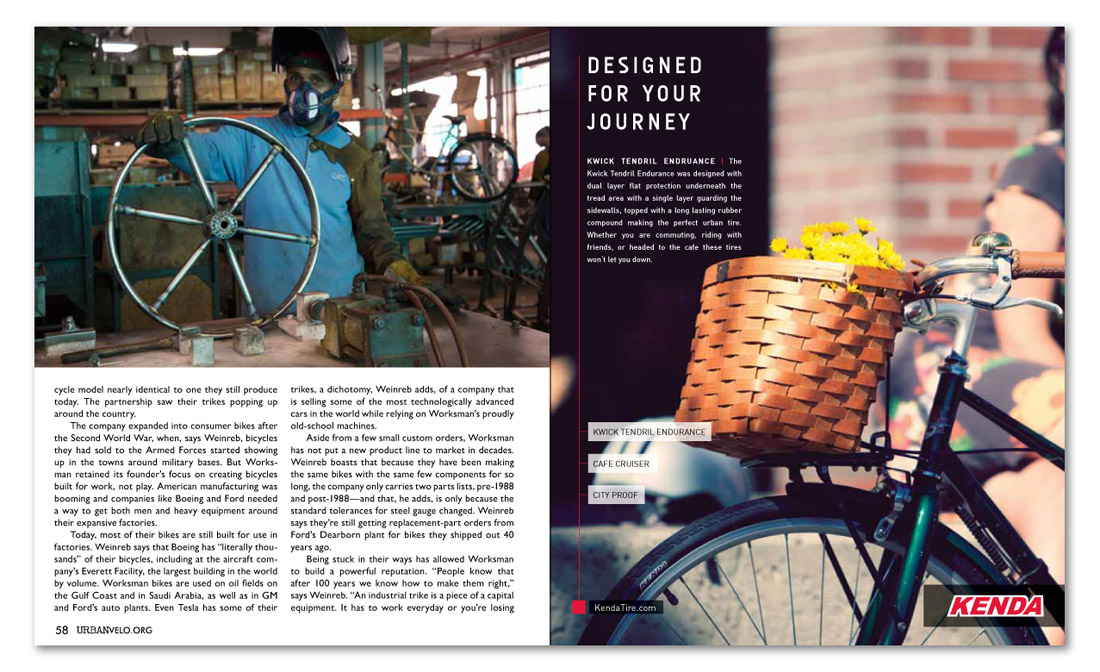


Icycle model nearly identical to one they still produce today. The partnership saw their trikes popping up around the country.
The company expanded into consumer bikes after the Second World War, when, says Weinreb, bicycles they had sold to the Armed Forces started showing up in the towns around military bases. But Worksman retained its founder’s focus on creating bicycles built for work, not play. American manufacturing was booming and companies like Boeing and Ford needed a way to get both men and heavy equipment around their expansive factories.
Today, most of their bikes are still built for use in factories. Weinreb says that Boeing has “literally thousands” of their bicycles, including at the aircraft company’s Everett Facility, the largest building in the world by volume. Worksman bikes are used on oil fields on the Gulf Coast and in Saudi Arabia, as well as in GM and Ford’s auto plants. Even Tesla has some of their trikes, a dichotomy, Weinreb adds, of a company that is selling some of the most technologically advanced cars in the world while relying on Worksman’s proudly old-school machines.
Aside from a few small custom orders, Worksman has not put a new product line to market in decades. Weinreb boasts that because they have been making the same bikes with the same few components for so long, the company only carries two parts lists, pre-1988 and post-1988—and that, he adds, is only because the standard tolerances for steel gauge changed. Weinreb says they’re still getting replacement-part orders from Ford’s Dearborn plant for bikes they shipped out 40 years ago.
Being stuck in their ways has allowed Worksman to build a powerful reputation. “People know that after 100 years we know how to make them right,” says Weinreb. “An industrial trike is a piece of a capital equipment. It has to work everyday or you’re losing